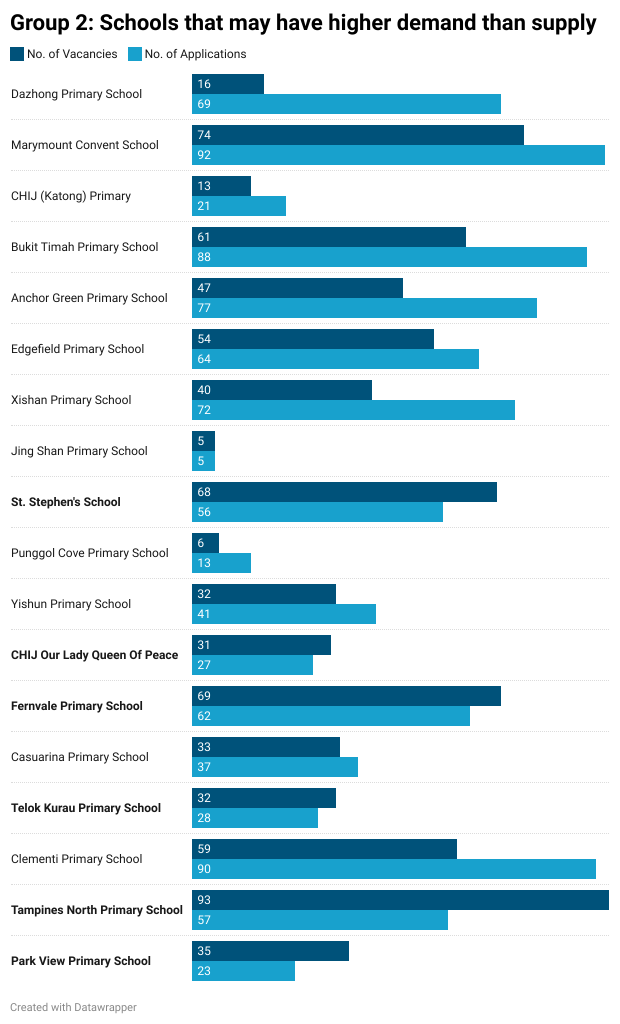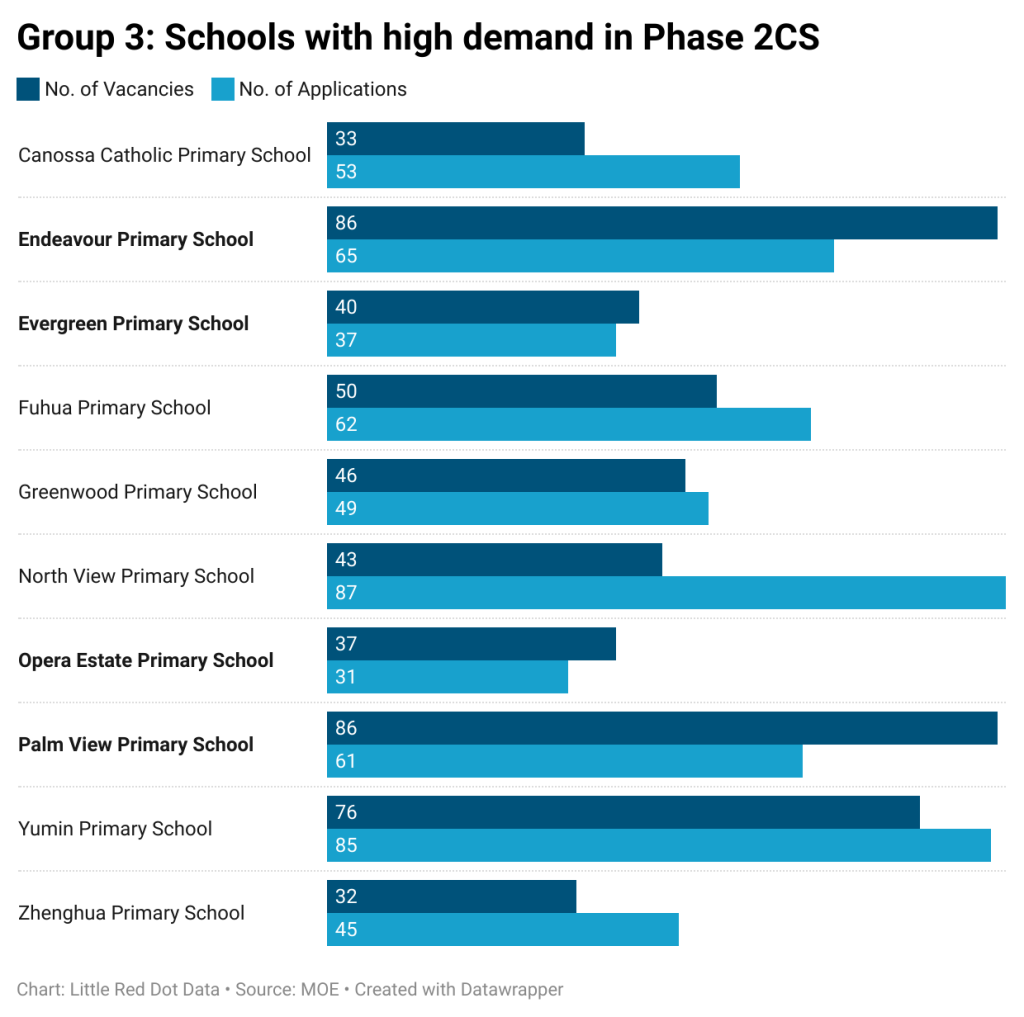Dear readers, we have reached the end of 2021 Primary 1 (P1) Registration Exercise for Singapore Citizens and Permanent Residents. While the Ministry of Education (MOE) will be conducting Phase 3 for International students (IS), the process is not within our scope of analysis.
Earlier on, we said that “one should avoid balloting in Phase 2C Supplementary as far as possible.” To do that, we have identified 39 schools that we felt are at high risk of balloting for Phase 2C Supplementary. Let’s find out how did our list do?
Group 1: Schools that were full before Phase 2CS in 2020
Our first list consists of 11 schools that had 0 vacancy for Phase 2C Supplementary in 2020, i.e. their places had been completely filled up by Phase 2C last year. These are popular schools that we think are almost certain of balloting in Phase 2C Supplementary this year. Not surprisingly, MOE’s final update shows that we are right on all of them.

Group 2: Schools that may have higher demand than supply
The second group is made up of 18 schools whose estimated demand (based on the number of applications made in 2020 Phase 2C Supplementary) is higher than the supply (based on the number of vacancies in 2021 Phase 2C Supplementary). Using last year’s numbers to estimate for this year’s is always going to be “iffy”. Notwithstanding, our forecast is correct about 12 of them (67%).

With the exception of Tampines North Primary School, the remaining 5 schools, namely St. Stephen’s School, CHIJ Our Lady Queen of Peace, Fernvale Primary School, Telok Kurau Primary School and Park View Primary School) have less than 15 vacancies remaining after Phase 2C Supplementary, with 2 of them having less than 5 vacancies remaining.
Group 3: Schools that had balloted in Phase 2CS in 2020
Finally, the last group of 10 schools are primary schools that had balloted in Phase 2C Supplementary in 2020. There is a high degree of uncertainty about these schools. Thus, we had some reservations “whether this group of schools will be balloting within the same or different home-school distance category distance as per last year or not at all” in our previous article. In terms of outcome, we are right on 6 primary schools (60%).

Conclusion
Our model suggests 39 primary schools were at risk of balloting: 27 of them did ballot while 1 school had places for Singapore citizens within 1km only. The model did miss out on 1 school; it didn’t manage to identify Peiying Primary School as a risky school for Phase 2C Supplementary (note: Peiying Primary School had 93 applications in Phase 2CS this year, more than double the number of applications it had in the same phase last year).
A single year (2020) data is probably not comprehensive enough for us to build a robust prediction model. Nonetheless, it has done well enough to provide us with a quick look at how the P1 Registration Exercise is likely to turn out this year. Insofar as we can tell, the model isn’t too far off from the eventual outcome. We will continue to improve our model by looking at more data points in our subsequent forecasts.